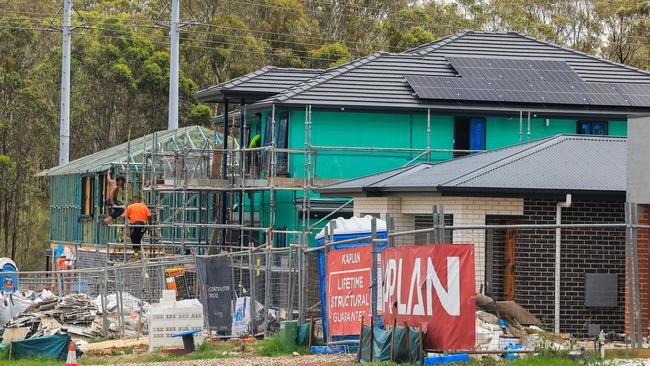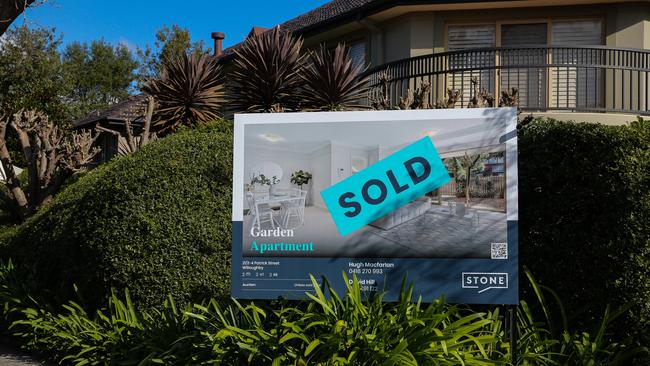Why 2024 property forecasts are suddenly looking out of date
A batch of negative data and market nerves have combined to undermine the upbeat forecasts for the residential property market.

If you have been on holidays – or perhaps are still in a holiday frame of mind – it might be time to tune in. Unfortunately, the investment market you left behind at the end of 2023 is history. In the space of just a few weeks the outlook for the year ahead has deteriorated.
The malaise has already hit share markets – the ASX is down more than 2 per cent year to date.
And there is every chance the property market will be next.
At the very least we might need to pare back the already muted expectation for house prices. The consensus remains for a 3 to 5 per cent lift, but the logic behind a handful of negative calls is increasingly compelling.
The single outstanding drag on investment sentiment this month is the realisation that rates may stay up for longer than anticipated. Coupled with that concern is the perennial worry over recession in the US, China and especially in Europe. In Australia there is no obvious threat of recession but economic growth is expected to move at half the pace of last year – maybe we will see 2024 GDP at 1 per cent.
Markets can only stay disconnected to reality for so long. This week we received two sets of numbers that should sober even the most ardent property bull.
In both cases the data could undermine the assumptions that Australians will keep bidding up property prices in the year ahead.
The headline issue is signs of softening in employment levels. You may have seen that the unemployment rate was steady at 3.9 per cent. But a closer look at the report shows the number of people in jobs fell by 65,000 in December while the number of hours worked also fell sharply.
This is a once-off jobs report, but if we get repeats of these unemployment numbers throughout the year, then it will hit house prices because it smashes the ability of people to pay their mortgages or their rents.
But the numbers that are most concerning this month are the figures dealing with consumer data. The consumer sentiment numbers are so bad that they are now running at levels not seen since the GFC. They are, in the words of Westpac senior economist, Matthew Hassan, “deeply pessimistic”.
If we spent last year wondering when the impact of 14 rate hikes would hit the economy – the consumer sentiment figures suggest it will be this year.

It is worth noting that these sentiment figures also include the attitude towards buying property. In the latest Commonwealth Bank household spending insights report the ‘home buying intentions index’ fell a whopping 40 per cent year-on-year at the end of December.
No wonder forecasts for property in 2024 are suddenly looking mixed.
At the end of last year, we had just witnessed a 9.3 per cent improvement in prices across the combined capitals. The consensus of a 3 to 5 per cent lift in prices looked reasonable – if modest.
But that forecast of gently improving prices is now under pressure. What’s more, it’s interesting that the fresher forecasts are more negative.
AMP chief economist Shane Oliver left the release of his outlook until January 9 when he joined the small – but noticeable – cohort who are suggesting prices will drop.
Oliver suggested: “Australian home prices are likely to fall 3-5 per cent as high rates hit demand and unemployment rises. The supply shortfall should prevent a sharper fall and expect a wide dispersion. Rate cuts will help later in the year.”
In a similar vein – from a similarly prominent economist – Stephen Koukoulas at Market Economics suggested in The Australian earlier this week: “I know that most forecasters expect prices to rise but my forecast is for a 5 per cent fall in 2024 and it has growing downside risk.”
And it’s not just economists. Dyed-in-the-wool property analysts have also suggested prices could decline. If you go back to the SQM Research outlook released late last year, analyst Louis Christopher seemingly went against the grain when he forecast home prices could fall in both Sydney and Melbourne in the coming 12 months. (SQM suggested falls of up to 4 per cent for Sydney and 3 per cent for Melbourne.)

One thing is clear: the forecasters who spell gloom for the market have had their assumptions fortified in the first weeks of 2024. Assumptions of fading demand based on sustained high rates and widening unemployment now look accurate.
The other feature of this year’s forecasts is that there is a distinctive regional split in the numbers. For example, there is a widespread agreement that Perth – the outstanding city last year with price gains of 15 per cent – will retain its place as the strongest performing centre this year.
In contrast, Melbourne limped along at 3.5 per cent last year. And though property investor groups point to the city as a long-term ‘buy’, the same issues that subdued prices in the city last year remain in place this year.
As for property type – the outlook is stronger for apartments than houses, again this is due to catch up.
Just as Perth is now catching up with the east coast cities, apartments – which only managed half the Covid era gains of stand alone houses – are now the strongest element in the residential market.
Of course you might be thinking that economic forecasters invariably get it wrong – this is true.
In early 2023 the consensus was that property was in for a bad year. That was wrong, the reverse happened.
Have they got it wrong again in 2024?








To join the conversation, please log in. Don't have an account? Register
Join the conversation, you are commenting as Logout